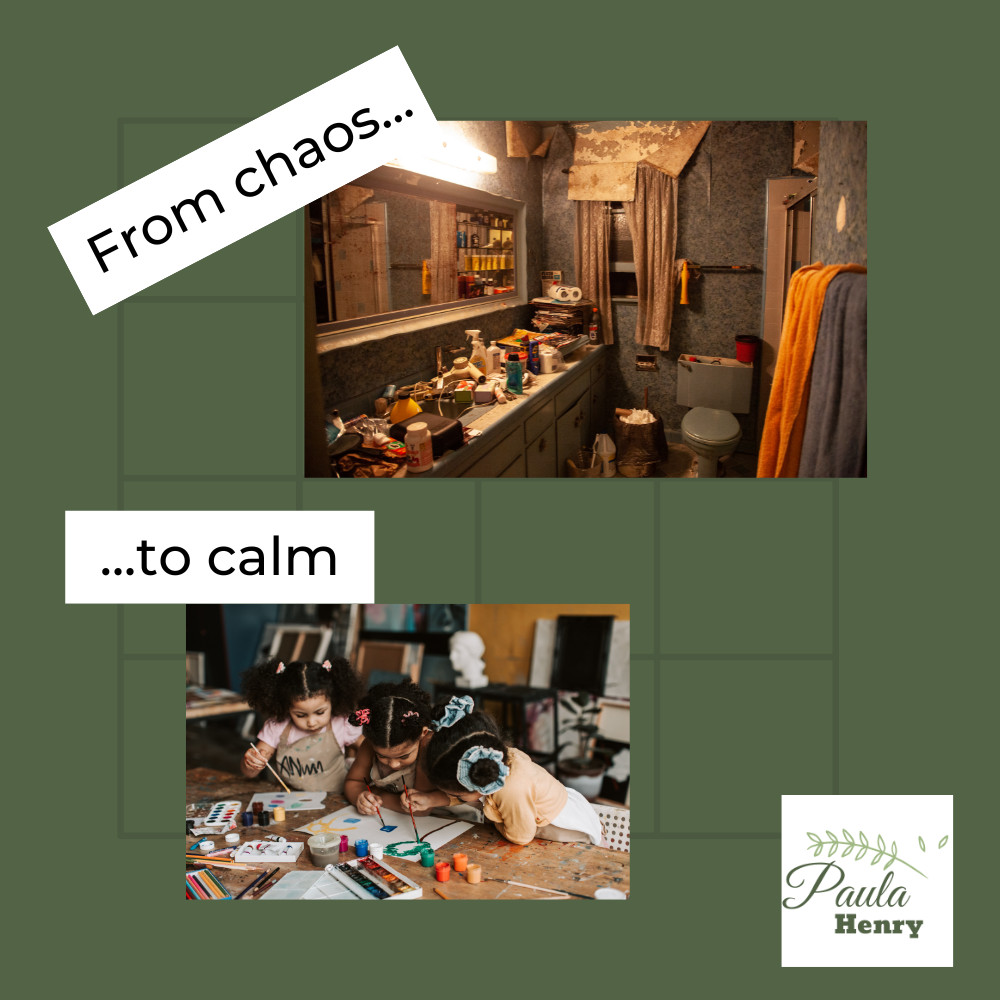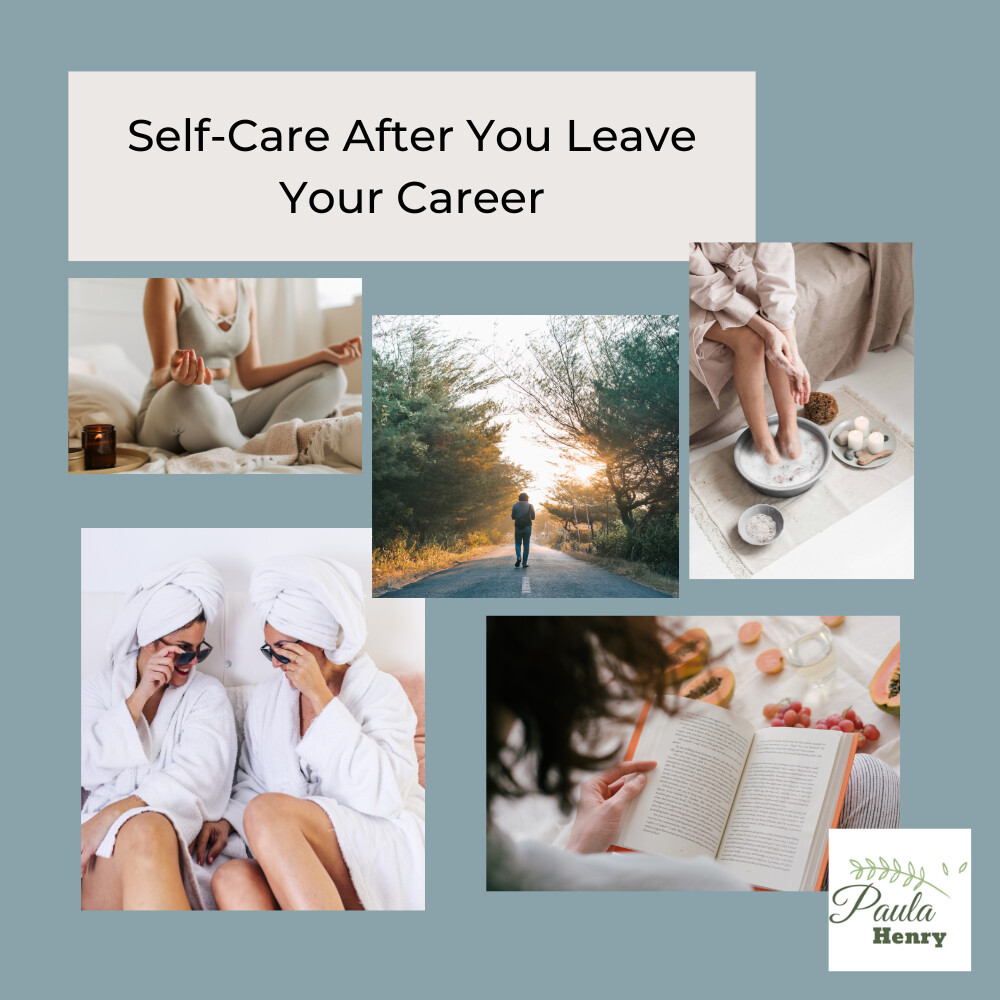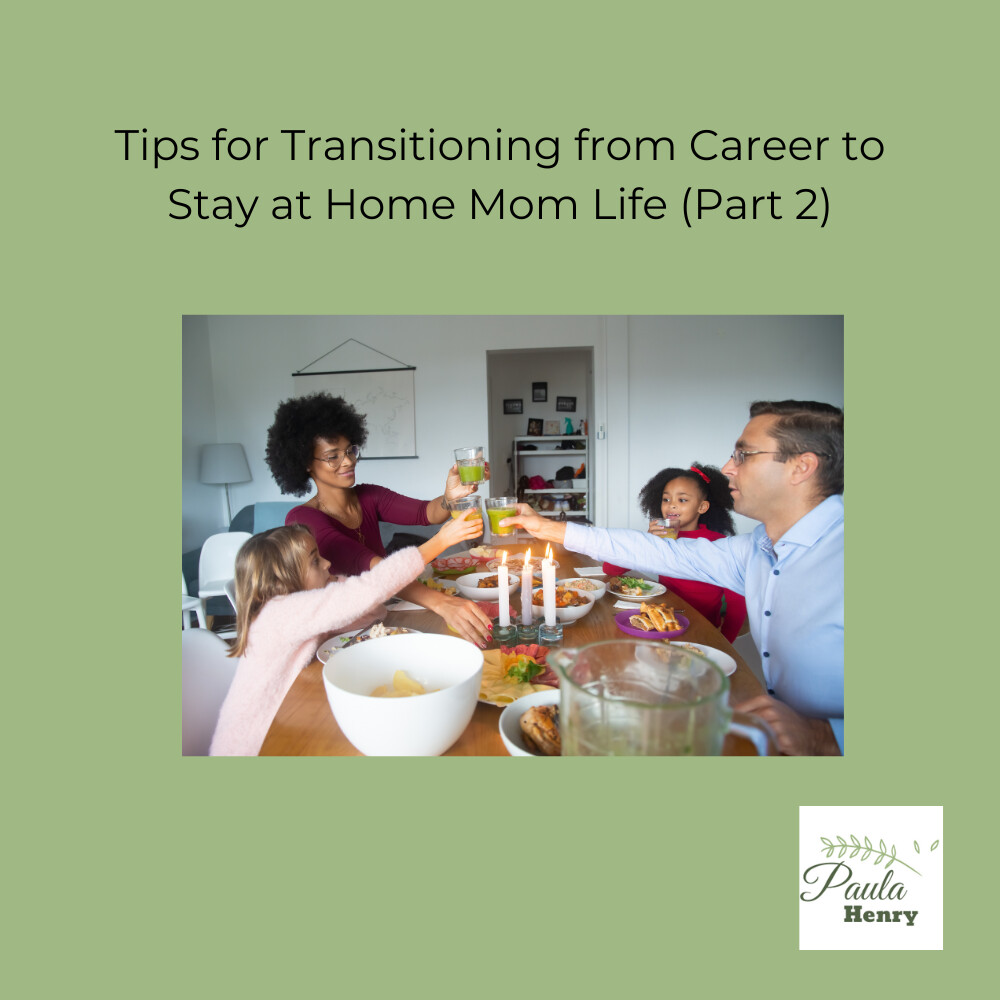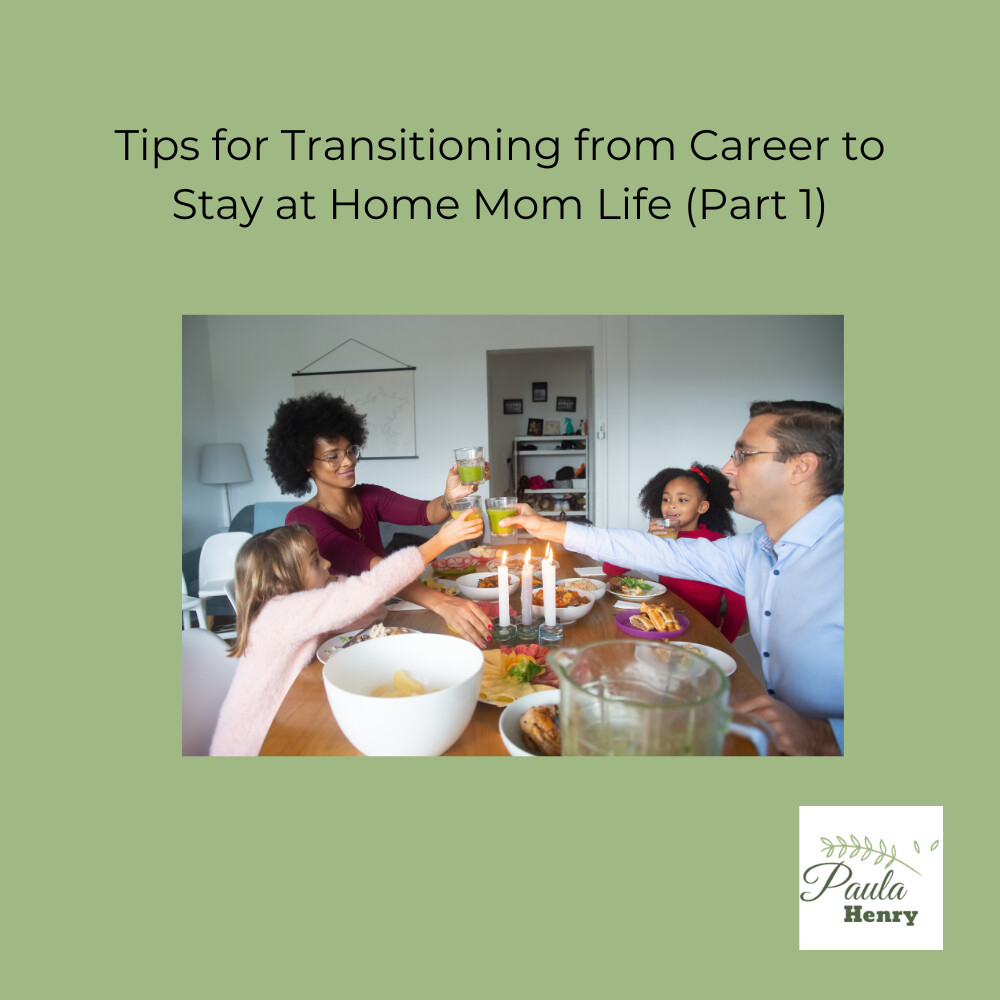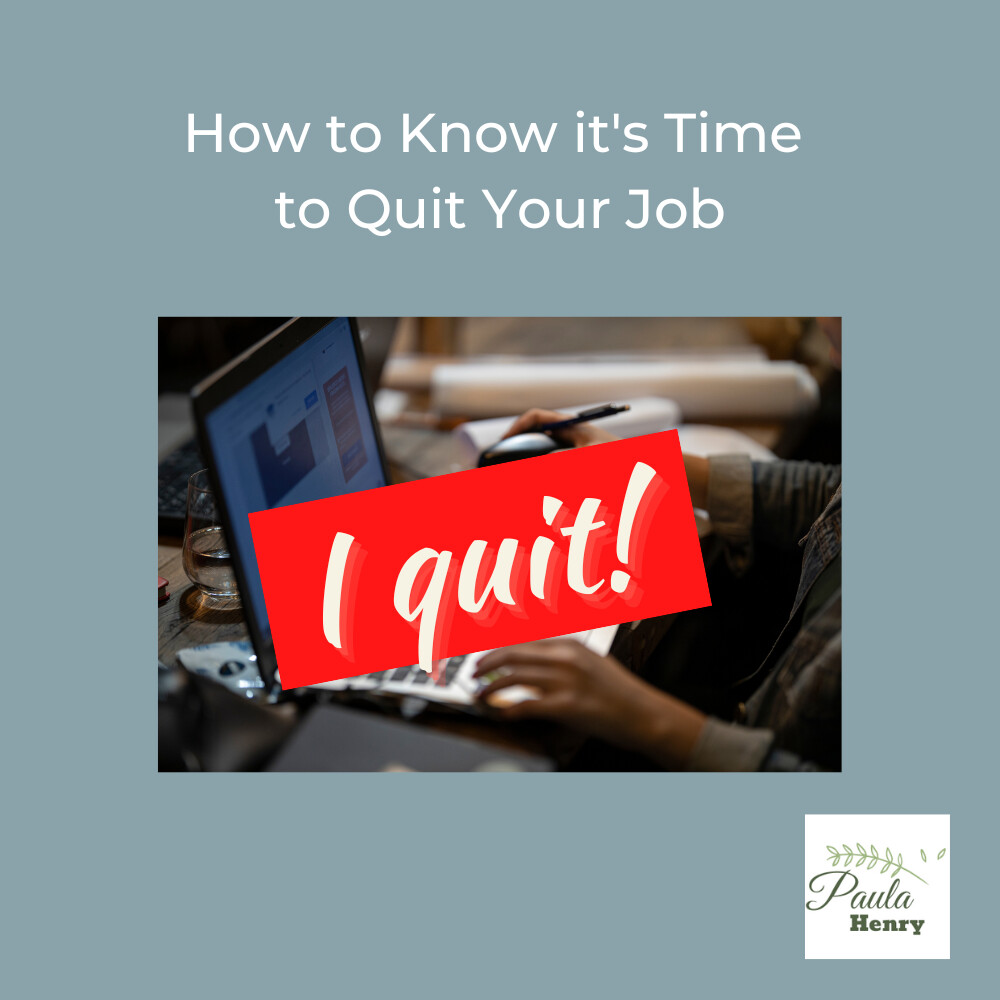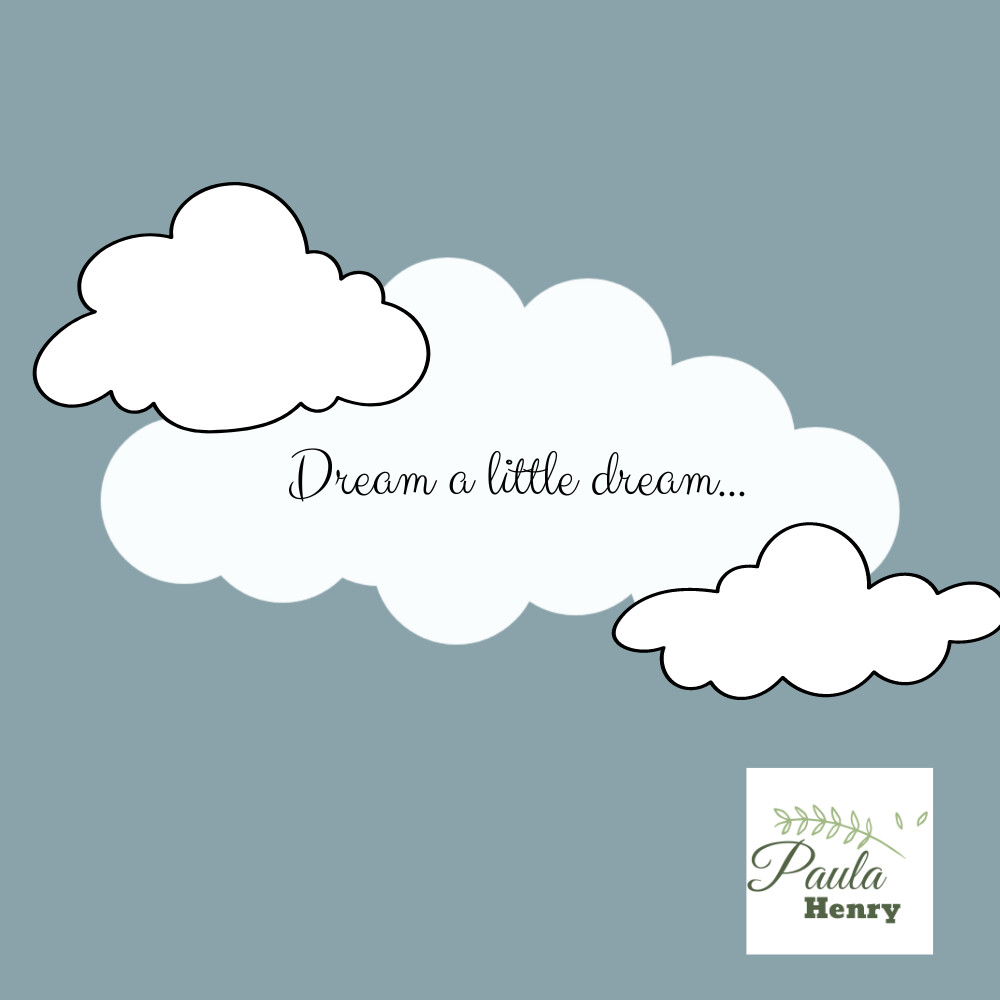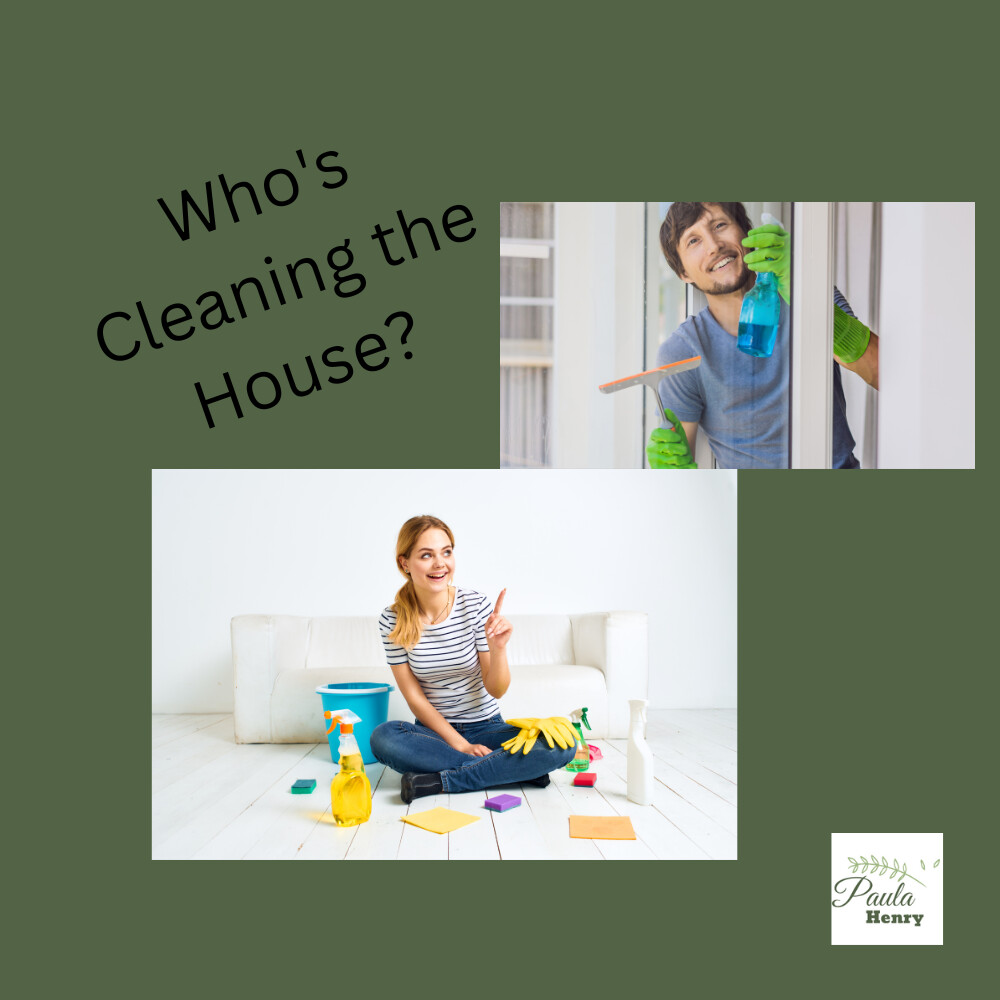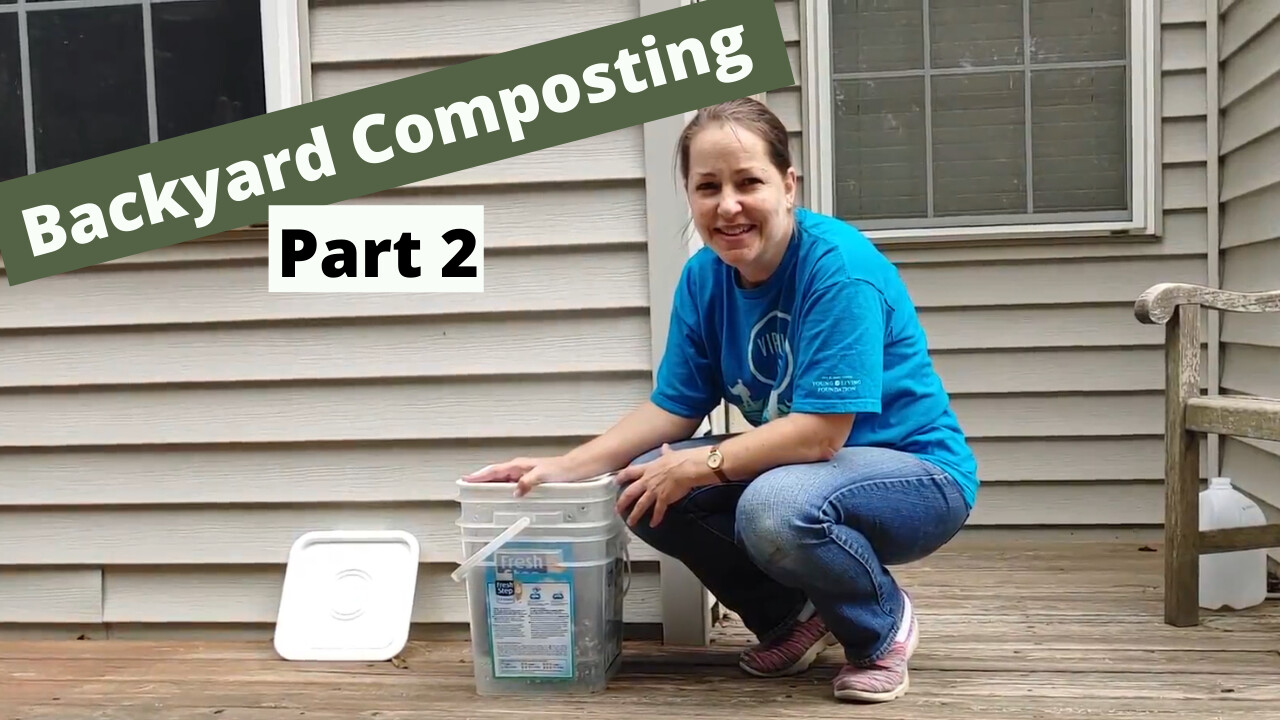
In my previous post, I showed how I prepared my two-bucket system from empty cat litter bins I obtained from one of my friends. Once the initial layers of material were in place, there was not much that I needed to do except keep an eye on it.
Across the next 4 weeks, I checked on my compost routinely – at least twice per week to give it air and mix it up a bit. I used a regular garden trowel to access the material at the bottom of the bucket to bring it to the surface. I tried to make sure to keep the food scraps in the middle of the pile as much as possible, as I had read that’s where they should be.
I also fretted about whether it was too dry or too wet and whether the ratio between browns and greens was right. I added water when it got too dry and added dry materials when it seemed to wet. Not much changed on a day to day basis, but across the weeks, I could see that the food scraps, eggshells and other greens were breaking down slowly.
There were some sprouts that popped up along the way, and I just plucked them out as I saw them. Not being sure what they were coming from, I didn’t consider eating them. I’m happy to indulge in sprouts that are from beans, but the unknown? I’m not that adventurous.
I checked for heat to be generated from my little bucket. Composting in this way should be generating heat, so adding more food scraps and greens when the temperature of the pile seemed to drop helped with this.
Lastly, I added some dried leaves on top of the bin as someone suggested this would help the compost break down better as well as keep down the bugs. I certainly saw a good number of tiny flies in the bin. I will show you what happened in the next post. Stay tuned.
Here's a link to the second video that I did in this series:
Interested in learning more about earth-friendly options? Join my free group here.
Get my free guide: 4 Ways Being Earth-Friendly Can Change Your Life for the Better HERE.

I have collected food scraps and contributed to my county’s curbside food scrap collection program for a number of years, and I’ve also gardened on and off. When I was setting up my garden this year, I wanted to add in some compost to supplement the soil and looked to purchase some from our county’s composting program. Of course, it’s the year of covid, so the facility which normally sells bulk mulch and compost to the public was closed to customers.
Thinking that things would resolve soon, I waited and waited. Finally, it was nearing the end of the growing season, and I was starting to plan for next year with no compost. So, at the end of the summer, I decided to experiment with making my own compost bin.
I watched a ton of videos to get a feel for what I needed to do and once I felt confident in trying it out, I set out to try my hand at creating some of that amazing nutrient rich garden material myself. I decided to try the bucket system as it seemed like the easiest and cheapest method for a newbie.
A lot of the videos I watched suggested going out and buying 2 plastic bins that would fit inside each other, but I didn’t like the thought of purchasing more plastic and wanted to find a different option. I recalled that cat litter often comes in plastic bins, so I put a call out to some friends to see if they had any empty buckets. I have one friend in particular who has multiple cats, and she was able to give me two empty bins with lids, so I was off to a good start.
One thing to know about me is that I am frugal. I don’t like spending money on things I’m not sure will work because if they don’t work, I view it as wasted money. Once I know something will work, I’m happy to spend the money, but initially? I want to invest as little as possible.
Free empty bins…check. Next up, prepping the bins based on what I saw in online videos. The key to bucket composting, I learned from the videos, is to have holes in the bucket for drainage and air. I’m pretty handy with a drill, so I made quick work of this part.
Once the bucket was prepped, I had to figure out the right ratio of “browns” to “greens” to put in my bin. There are lots of opinions out there about the ratio between browns and greens, and I admit I spent quite a bit of time studying this. You see, the greens are the fresh plant material and food scraps that you want to decompose. The greens are high in nitrogen. The browns are materials that are high in carbon like dried leaves, pine needles, twigs and dried paper. Once I was convinced of the correct ratio, I set out to build my bins and deposit my first materials. In parts 2 and 3, you’ll learn that this ratio is not all that critical.
Here’s the first video in my 3 part series that shows you my preparation steps, including drilling holes and what I put in the bin initially.
Interested in learning more about earth-friendly options? Join my free group here.
Get my free guide: 4 Ways Being Earth-Friendly Can Change Your Life for the Better HERE.
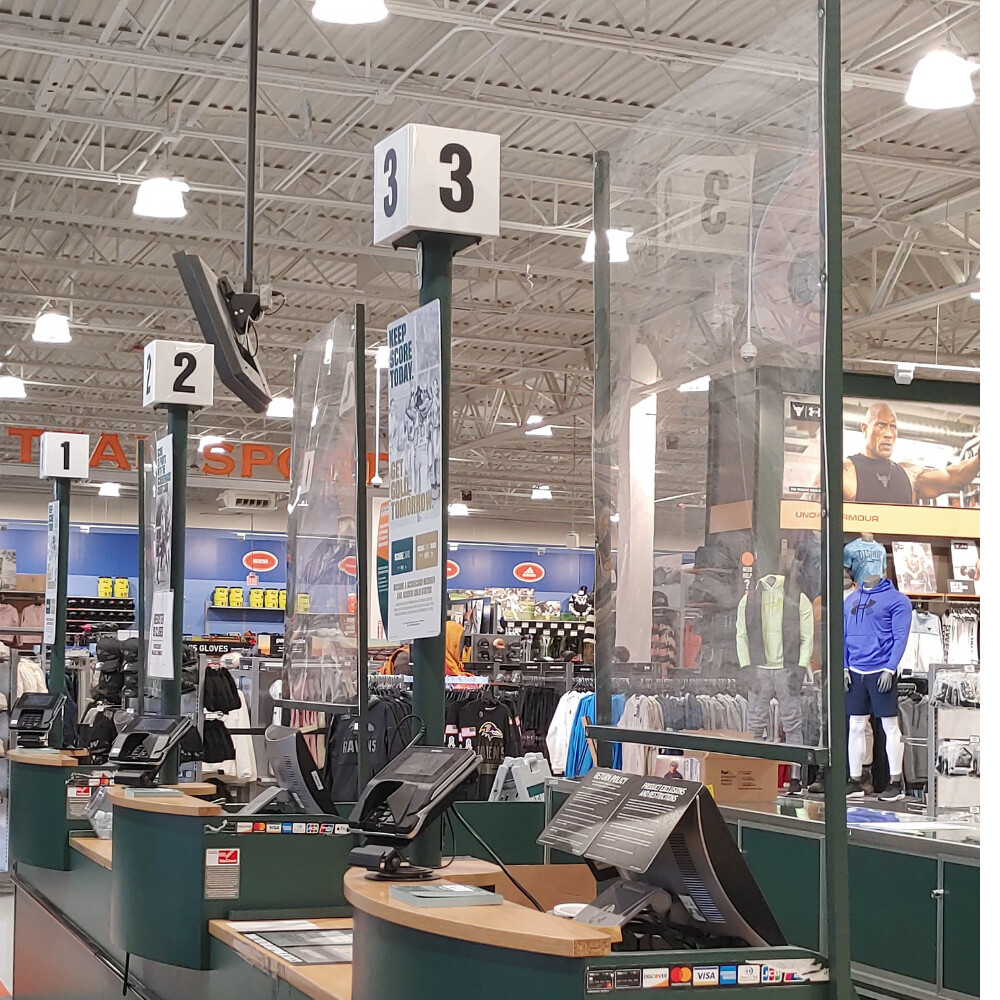
There’s no doubt that the production of plexiglass and other barrier materials has ramped up since the onset of the pandemic. I get it. We need to do all we can to protect people during a pandemic. That said, I do wonder, what are we going to do with all of this plexiglass when the pandemic is over?
Plexiglass and other manmade protective materials are everywhere these days. We understandably rushed to make face shields to protect our first responders and health care professionals and then, as soon as businesses were able to open up again, the CDC recommended the use of barriers to slow the spread of the virus.
According to Forbes magazine, the market for acrylic sheeting is in the $4 billion range. That’s right, billion with a “B”. They’re in every store and restaurant to protect both the cashier and the customer from spreading the virus through droplets from spit, sneezing and coughing. Whether or not this is effective is up for debate and quite irrelevant to the topic at hand.
So, here we are.
Let’s look at plexiglass as a material and learn a few things about it.
What is plexiglass made from?
Plexiglass (also known as acrylic) is a petrochemical thermoplastic created in the early 1930s as an alternative to glass. It is both cheaper to make and lighter in weight than glass which is why it is being used so widely. Plexiglas (spelled with one “s”) is a registered trademark in Germany, but just like usage of the terms Kleenex, Crock-Pot and Ziploc, people often refer to products by a trade name regardless of who makes them.
The term petrochemical tells us that the product is made with oil. Since we know that use of fossil fuels is not sustainable long term, we cannot consider this an environmentally friendly product. The manufacturing process involves highly toxic chemicals that need to be handled and disposed of properly.
Plexiglass has been used for decades in any number of fields from health care and retail to automobile manufacturing. It’s used in eyeglasses and solar panels, greenhouses and car dashboards. It is a great option for times when weight or cost is an issue, and it is superior to glass from a safety standpoint since it is shatter-resistant. The onset of the pandemic has simply amplified its usage across all sectors of life. The abundance of plexiglass everywhere you turn is what gives me pause. What are we going to do with it when this is all over?
Can plexiglass be recycled?
In theory, plexiglass and other acrylic materials can be recycled, however, most curbside programs do not accept it, so we’re in a bit of a pickle. Although it may be possible to recycle it, the number of places that will recycle it are few and far between. So this is its biggest downside. It doesn’t biodegrade and we’re not likely to be able to recycle it. The better alternative overall is to put it to a new use once it is no longer needed as a barrier.
Quite honestly, I think this is a great opportunity for someone to develop a creative post-consumer use for all of this plexiglass as I’m afraid it will all end up in the landfill. Does anyone have any ideas? There will be a plethora of plexiglass, all we need is a brilliant and creative idea or two.
Sources:
Interested in learning more about earth-friendly options? Join my free group here.
Get my free guide: 4 Ways Being Earth-Friendly Can Change Your Life for the Better HERE.
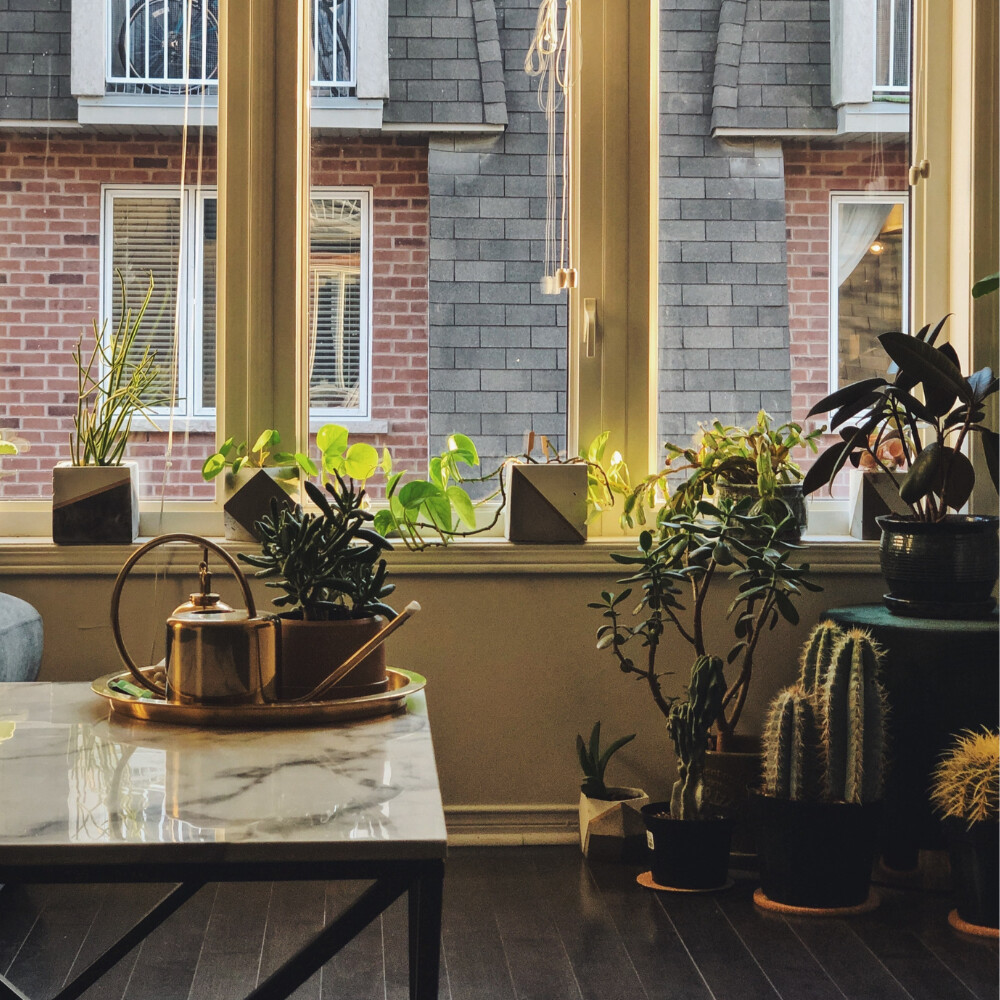
Plants are a great way to help improve your overall well-being, your mood and to some extent your indoor air quality. NASA conducted a study back in the 1990s to look at the amount of toxins absorbed by plants for the purpose of improving air quality on the space station. What they found was that when a plant was contained in a small plexiglass structure and a single volatile organic compound (VOC) was applied to it, plants were able to remove a huge amount of the VOC.
At first, the press took the findings and ran with them claiming that people could purify the air in their houses or offices with the help of a few plants. Well, this turns out not to be the case. We have to keep in mind that the results of the studies looked at removing a single VOC from a very small volume of air. Applying that to the real world introduces a whole bunch of real-world variables that makes it not so straight-forward. In order to purify the air in your house, you would need to have a large number of plants (say 600+). That’s based on a calculation of 100 plants per square meter of space and the presence of more than one toxic agent. Plants are great, but they can only do so much. It turns out, opening a window or a door far outweighs having plants in the space in regards to cleaning the air. So, if you’re looking for a substantial amount of fresh air, open a window or a door.
As far as plants are concerned, I’m not about to tell you what you can or can’t do in your own home. If you want to live in an indoor forest or jungle surrounded by plants, go for it! You do you! We know that plants provide benefits to our lives, not the least of which is adding oxygen to our environment. More importantly, plants can help us with our overall mental and emotional well-being.
Research has shown that plants have a positive effect on people’s moods and they can help us be more productive. Taking care of a living thing encourages a sense of nurturing and being needed. The interactions we have with plants through touching them and smelling them can boost our outlook on life and contribute to our overall well-being. Having plants can simply result in having a happier life. What an easy thing to do!
So, what kind of plants should you get? There are lots of varieties, so I would suggest evaluating 3 factors:
- What is your living space like? Is there a lot of light or very little? If you have a dark living space, you might want to go with plants that thrive in the shade. If the spaces in your home are bright, go with a choice that does well in bright light.
- Decide if you would like plants sitting on a table, desk or counter or if you would like them to sit on the floor. That will guide you as well.
- If you have pets or children, look up the plant you plan to get to make sure that it is not toxic to animals or humans. I have found some of this information contradictory, so do a thorough search and decide for yourself whether you are comfortable having each plant in your house.
Here are some suggestions for the low light conditions:
Three plants that are suitable for placing on the floor are: Spathiphyllum "Mauna Loa" also known as a peace lily, Sansevieria laurentii also known as a snake plant or mother-in-law’s tongue and Dracaena marginata also known as Dragon Tree.
All of these plants like low to medium levels of light. I have both the peace lily and the snake plant and both are flourishing in my home. I have a snake plant in my bathroom (it likes periods of humidity, and I have a window) and the peace lily is in the eating area of my kitchen.
The peace lily, in particular, tells you when it needs to be watered by starting to droop. When that happens, it looks so sad, I can’t help but apologize to it as I water it. The snake plant, on the other hand, can go for months without water. I typically water it with cool water from the shower when the water is heating up. Some people refer to the snake plant as the “impossible to kill plant” as it is very tolerant to periods of drought.
Two great plants for low light and sitting on tables, counters or desks are pothos and aspidistra. I have a pothos from shortly after I graduated from college (20+ years ago), and it is still going strong. A pothos plant has tendrils that shoot off from it which you can propagate very easily and then have new plants to gift to your friends and family. Just like the peace lily, it lets you know when it needs water by drooping considerably. Aspidistra is a hardy plant that stays relatively small and works well on tables. It is called the ‘cast iron plant’ because of its hardiness. Both pothos and aspidistra are extremely tolerant.
Here are some suggestions for the bright light conditions.
Three plants that are good for the floor are: Chamaedorea Seifrizii known as Bamboo Palm, Dracaena fragrans known as Massangeana and Dracaena deremensis known as Cane Plant, Warnekei or Janet Craig. All of them like to have good draining soil and for their soil to dry out between waterings.
Any cactus will do well in bright light conditions. They tolerate having little water and thrive in the sun. One example of a good cactus idea is aloe vera (also handy for treating burns). Another plant that loves direct son is the Codiaeum variegatum also known as the Croton plant. Both the aloe vera and croton tolerate drought conditions, so if you are a traveler or otherwise forgetful about watering your plants, these two will thrive under your care.
Whatever you decide, know that the presence of plants in your house or office will contribute positively toward your overall well-being and improve both your mood and your productivity. In these crazy times of COVID19 and mandatory quarantine, when we’re spending more time at home, it’s good to include a new plant to keep you company.
Interested in learning more about earth-friendly options? Join my free group here.
Get my free guide: 4 Ways Being Earth-Friendly Can Change Your Life for the Better HERE.
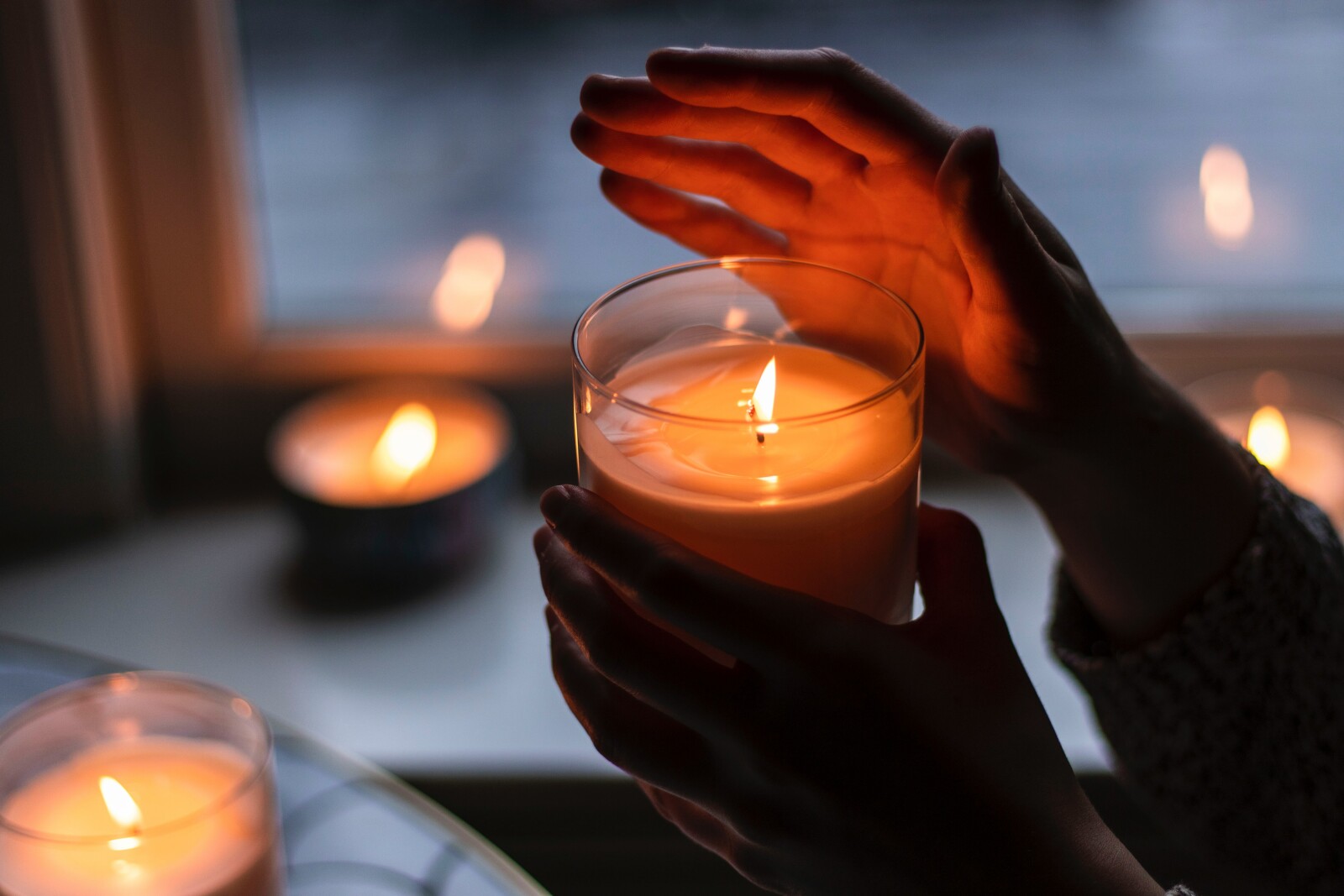
I used to love candles, particularly in the fall. I don’t know what it was, but something about the cooler temperatures made me want to set one out on the kitchen counter and light it up.
Friends, I no longer use scented candles, and I’m about to tell you why.
Read more...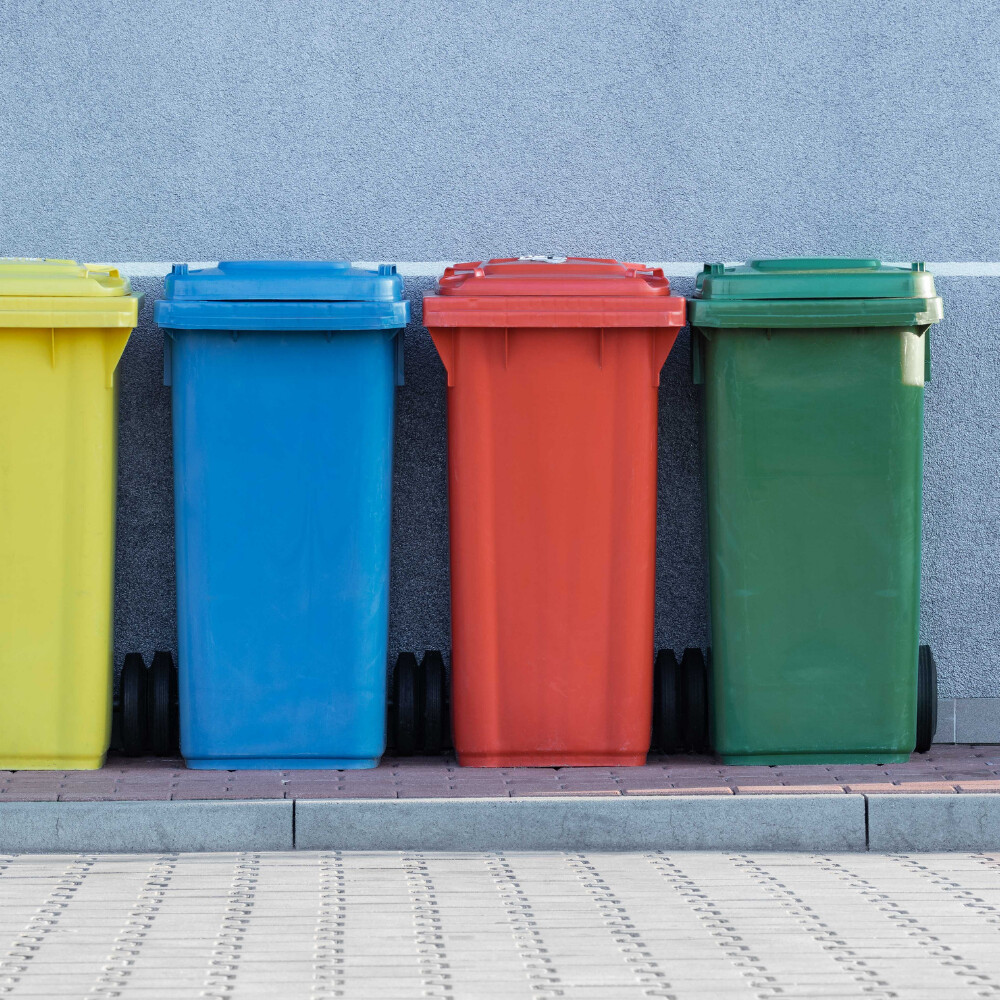
In our area, we are fortunate to have a curbside composting program. Here’s what that looks like: the county provides us with a free green bin into which we place our yard trim and food scraps. We set it out by our curb weekly and the county comes by once a week, year-round to empty it. The food scraps and yard trim are taken to an industrial composting facility. Once the composting process has been completed, the county sells the compost back to residents.
Let’s walk through some of the benefits to a curbside compost program:
1. Your garbage won’t smell as often.
The main component of garbage that smells is food scraps. If you are putting food scraps in your trash, your trash will smell. If you’re putting them in the curbside compost bin, your trash won’t smell. It really is as easy as that.
2. You won’t have as much trash.
Often, people change out their trash bag when the trash starts to smell, regardless of whether the bag is full. Given that it won’t be smelling as much, you won’t be changing out the bag as much. This will save you money on trash bags – another win.
3. Your food scraps will be made into dirt rather than filling up the landfill.
Using your food scraps to make soil is a far better endeavor than filling up the landfill. According to the USDA, nearly 30% of all trash is food scraps and yard waste. Uncontrolled, food scraps in landfills contribute to high amounts of methane gas which is detrimental to the environment.
Here are some tips for making curbside composting work for you and your family.
All food scraps and yard trim must be collected in compostable bags, so no plastic bags for this. You can use paper bags or specially made compostable bags. You can get paper bags from the grocery store, fast food restaurants, and other sources. The compostable bags are made from plant material (usually potatoes or cornstarch) and are available online from numerous sources. You can get my favorites here.
For large amounts of food scraps like from fresh corn, fresh pineapple or melons, you can use a large paper bag or you can spread out sheets of newspaper. Once you’re done, you can close up the bag or wrap the newspaper up like a package and place it in your curbside compost bin.
For smaller amounts of food scraps, consider getting a small container to sit on your counter or under your kitchen sink. The container doesn’t have to cost you anything. I have several plastic pails that were obtained from ice cream or popcorn. As long as the bucket has a lid, it will work. Here’s where I use those compostable bags. I put one in the bottom of the bucket and then add a layer of shredded paper from our home shredder. The shredded paper helps absorb some of the moisture in the food scraps so the bags won’t leak as easily. Once your bag is full, tie a knot in the top and deposit in your curbside compost bin.
For yard trim, you can use a paper grocery bag for small amounts (weeding and deadheading) or you can purchase larger bags for use in the fall for leaf collection.
Around here, the mantra is “feed the bin”, and I encourage you to do so. Keeping food scraps out of the landfill saves space and reduces emissions. Plus, it allows the food scraps to go back to the dirt from which they came, and that’s completing the full life cycle of plants.
Interested in learning more about earth-friendly options? Join my free group here.
Get my free guide: 4 Ways Being Earth-Friendly Can Change Your Life for the Better HERE.
*As an Affiliate for Net Zero, I earn from qualifying purchases.
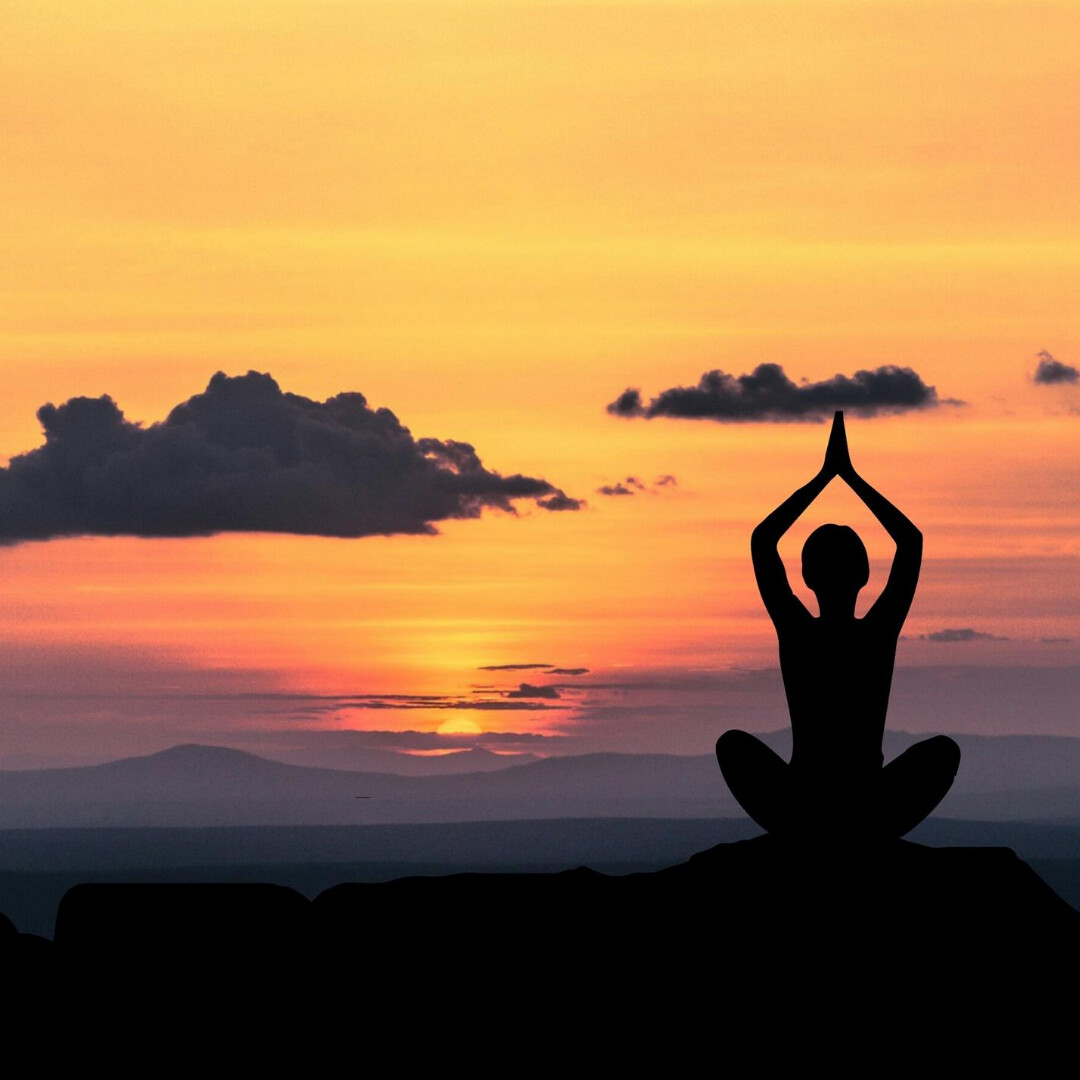
I’ve been taking yoga for 2 years now. If you’ve never taken yoga before, I highly recommend that you give it a try. You don’t have to be the thinnest, most fit, most flexible person to do it. Everyone is capable of practicing yoga, and every pose can be adapted to meet your body’s needs.
I’ve learned a lot in the past 2 years and continue to learn even more. This past week, my yoga teacher talked about the connections between yoga and nature. Between the names of the poses as well as the natural stretching of our bodies, the connection is subtle, but it’s there.
Here are a few things that yoga has taught me.
1. Breathe
This was my first lesson. You don’t realize at first that when you concentrate on holding a pose, you often hold your breath. My yoga instructor often tells us, “Enjoy your breath.” And that’s when it hits me. Oh, yeah, I’m holding my breath.
Learning not to hold our breath in yoga helps us learn to not hold our breath in life. When you’re stressed, tired, anxious or nervous, that’s a good time to focus on your breathing.
2. Honor Your Body
From day to day, our bodies change. One day, we can be stiff from working in our yard the previous day and the next day we can be well rested. One of the mantras of yoga is, “Honor your body.” Yoga is not supposed to hurt, so if you’re doing something that’s hurting, you should stop. Honor your body.
We only have one body, so we need to take good care of it. From what we put into our bodies to what we apply onto our bodies, it needs to be good for us. Our bodies need exercise and rest in order to function well.
Aging is no joke, and I’m not the athletic person I was in my youth. I need to honor my body by not pushing myself to do something my body is no longer able to do.
3. Live in the Moment
It is important to focus on what you are doing at the time and leave the distractions for another time. Easier said than done, right? Practicing yoga is a good way to force you to live in the moment. In a yoga classroom, all phones are off and it’s you, the mat and others in the room. These days, I practice yoga at home with a live feed from a yoga studio. It’s challenging, but I do my best to focus on yoga and not the clothes that need to be folded and put away or the dusty furniture that needs to be cleaned. The mental effort it takes to live in the moment during yoga has its rewards and makes me want to live in the moment in everything happening in my life.
4. Everyone’s Body is Different
Not flexible? Me either, but that will come in time as you continue to practice. Don’t let your body condition interfere with your ability to do something for yourself.
Can’t run like you used to? That doesn’t mean you can’t move. Walk instead. You’re still moving and using your muscles. Do what works for your body.
5. Balance Takes Practice
Our ability to balance drops off with age. As I age, I want to maintain an active lifestyle as long as I can. That means, I need to be deliberate in maintaining fitness and balance throughout my life. It will no longer come naturally. I will have to work at it.
Balance is important in all things, not just our physical sense. Do you work toward having a healthy work-life balance? Holding a balance yoga pose is a great reminder to work on balance in all aspects of our lives.
Whether you’ve been practicing yoga for years or have yet to take a class, I highly recommend it. You’ll gain in all aspects of your life.
Interested in learning more about earth-friendly options? Join my free group here.
Get my free guide: 4 Ways Being Earth-Friendly Can Change Your Life for the Better HERE.
*As an Amazon Associate I earn from qualifying purchases.
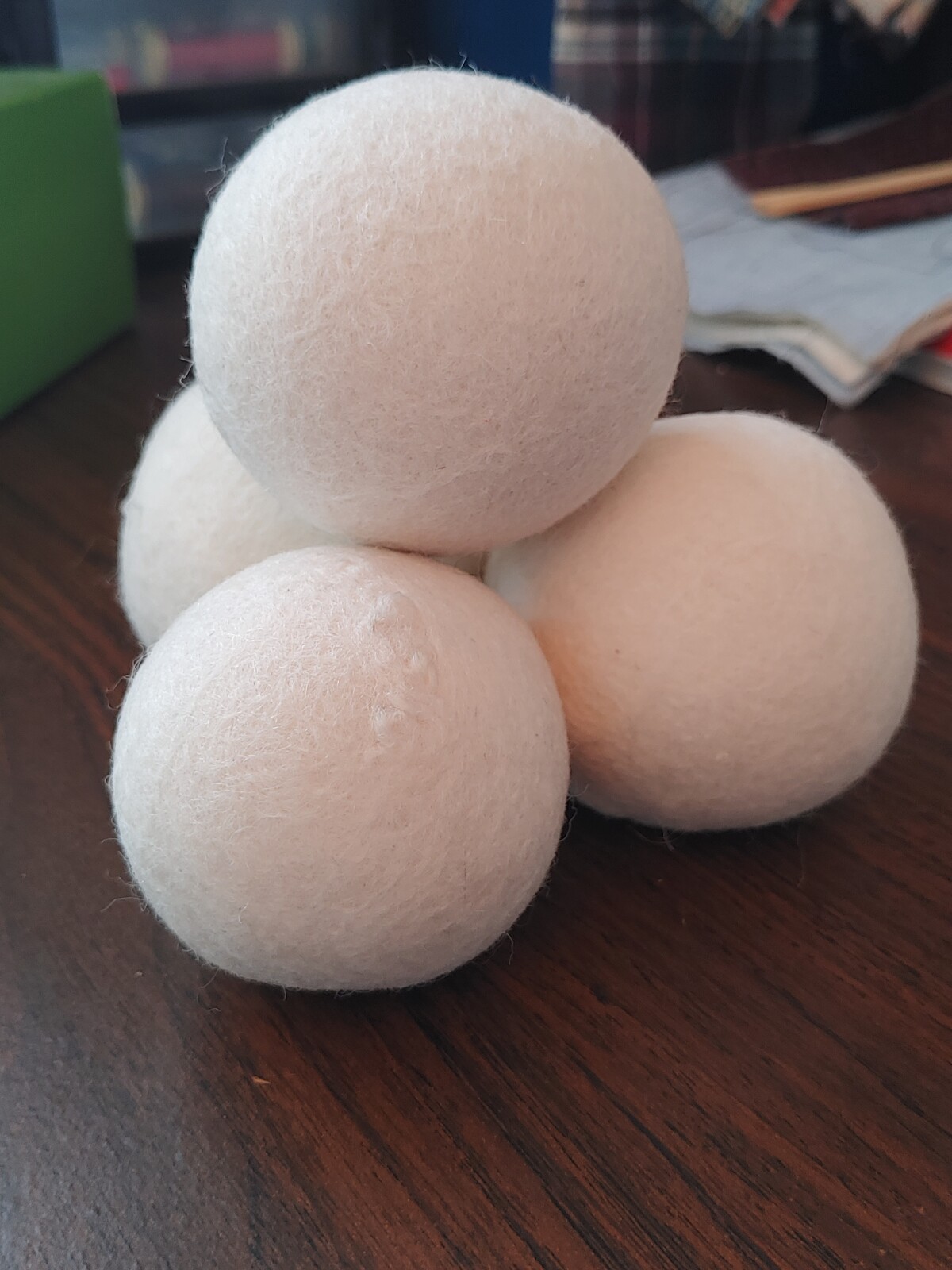
Dryer sheets might not be the healthiest or most earth-friendly product for any of us to be using. I grew up using them, so I get it. It was something I was taught to do. It was part of the household laundry routine. I knew they would help with static and make my clothes smell good, so I continued using them even once I left home. But along my journey for living a more natural and earth-friendly life, I found them both wasteful and potentially harmful for me and my family. So, let’s take a look at what these are made of and find a solution to replace them.
First of all, from an environmental perspective, these are single-use, disposable products made from synthetic materials (i.e., plastic). I have heard there are some that are made from a recyclable material, but let’s hold that thought.
Second of all, from a non-toxic perspective, these just don’t make the grade. They work by transferring their coating onto your clothes to make the clothes feel soft. You probably know the difference in the feel between a new dryer sheet and a used one. That stickiness on the new one is the coating that’s going to be transferred to your clothes. Added to it is a synthetic blend of chemicals to create a certain scent (fragrance). Fragrance is a catch all term used by manufacturers to label any chemical added to their product that smells. A company is not required to disclose the chemicals used in their product because their fragrance recipe is considered a trade secret.
Try looking on your box of dryer sheets to see what the ingredients are. I did. They’re not listed. Why? Because companies don’t have to list them.
So, here’s what we know for sure: the product is made of a synthetic material with added fragrance. Those two points alone are enough for me to give them a pass.
What can you do instead? Purchase yourself a set of wool dryer balls. They’re available all over the place. A set of 4 will serve you well for at least a year (or a lot more) and only cost you less than $10. I use 2 per load, so that gives you a couple to spare in case one gets stuck in the previous load.
There are a few tricks to switching over to them. First off, drop the heat setting on your dryer down a notch. Second, drop down the time on the drying cycle. These two steps in combination will reduce the amount of time your clothes rub together AFTER they are dry which is how some of the static builds up. If you’re looking to add in something to make your clothes softer, adding a bit of white vinegar to the fabric softener compartment of your washer can do the trick.
Missing the scent that you got from the dryer sheets? I got you, friend. You have several options:
- You can add a couple of drops of essential oils onto the dryer balls that will carry you through.
- You can take a damp washcloth, add essential oils, and toss it in the dryer with the clothes.
- You can add essential oils into your detergent in the washer. Yep, it works.
At this point, you’re going to be saving money on purchasing those single-use dryer sheets and perhaps improving your health overall by reducing your exposure to fragrance, which in my mind is a good thing.
Interested in learning more about earth-friendly options? Join my free group here.
Get my free guide: 4 Ways Being Earth-Friendly Can Change Your Life for the Better HERE.
*As an Amazon Associate I earn from qualifying purchases.

Why do we need to have a bag for a single or a small number of items? One of the easiest things you can do to reduce single-use plastic waste is to refuse a bag. Simply say, “no bag, please” or “I don’t need a bag.”
Read more...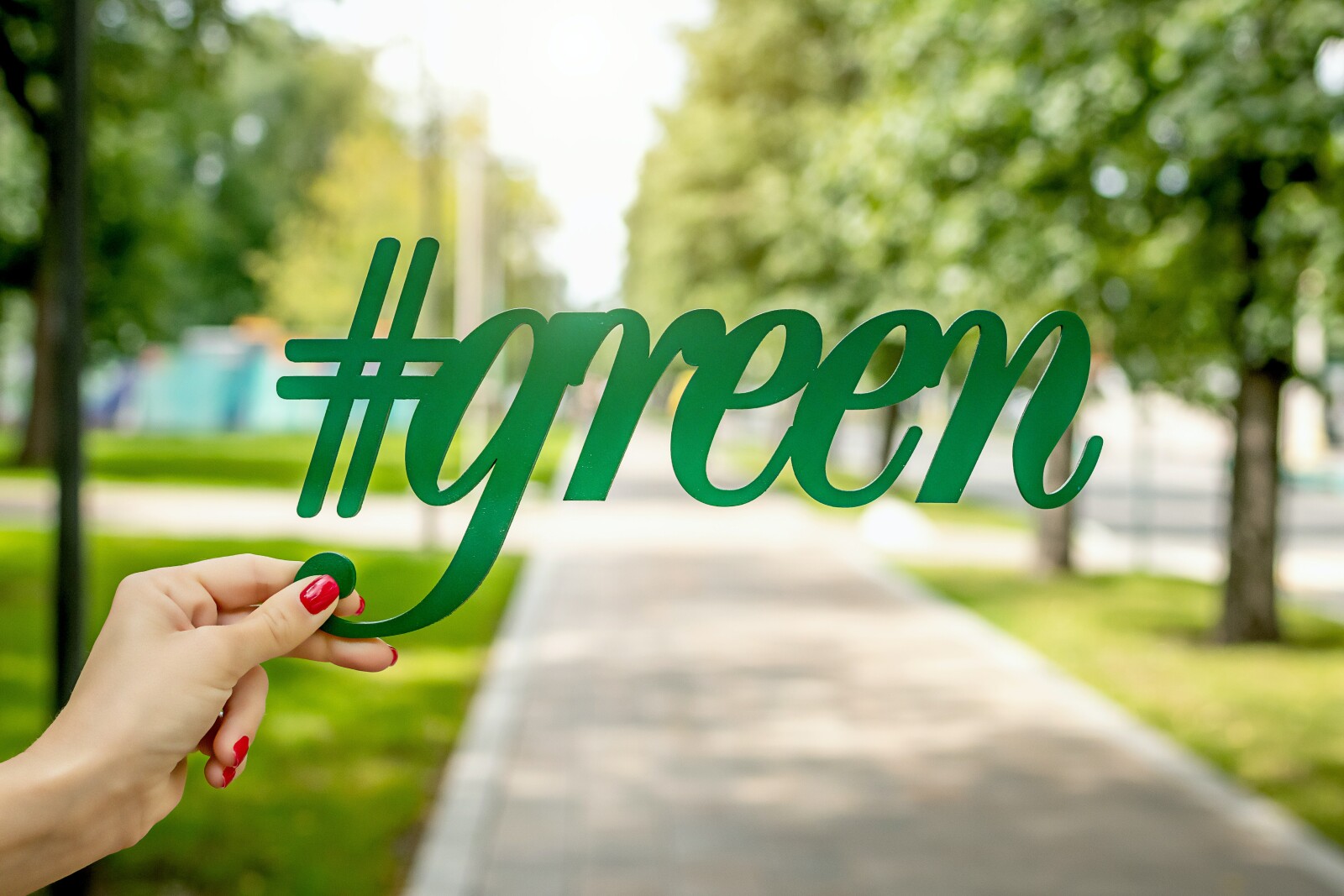
Most of us know what whitewashing is - trying to brush over unpleasant facts of a situation, particularly when it is political in nature. Greenwashing is whitewashing about environmental issues. It is a marketing practice conducted by companies to sway consumers into believing they or their product are more environmentally friendly than they actually are. In other words, the money spent on the advertising campaign is greater than the money spent on making the company or product environmentally friendly.
Why do companies do it? Well, consumers have moved more and more toward companies and products that have a lesser impact on the environment. This is a good thing. Because of this, companies are motivated to win customers over through making themselves environmentally friendly even if they’re not.
A specific example of this happened in 2018 with Starbucks. In an effort to appease the masses calling for an elimination of plastic straws, the company announced they were switching to a straw-less lid by 2020. Many environmental groups applauded their efforts. However, as it turns out, the straw-less lid contains more plastic than the old straw and lid combination. This is an example of packaging but what about what’s inside.
In the US, there are no regulations governing use of the terms “natural” or “nontoxic”. A company can claim that a product is natural even if it contains little to no natural ingredients and is, instead, primarily made of synthetic ingredients. The use of flowers or other “green” images are further attempts to convince the customer that the product is good for them.
What is the consumer to do?
- Do some digging on the ingredients in your products and the company that makes them.
- At the risk of becoming skeptical of all companies that make “green” claims, find companies that are living up to their marketing and practicing what they preach.
- Be on the lookout for small companies that are bought out by larger companies. When this happens, the ingredients in a natural product that was made by the smaller company are often changed to synthetic and undesirable ingredients in order to cut costs and increase profits. This has happened to me on more than one occasion.
- Lastly, just because a product is environmentally friendly one day doesn’t mean it will continue to be. Companies are known to change ingredients without warning. This has happened to me as well.
Bottom line, if you can find a company that you trust, buy as many products from them as possible. Check in on them from time to time by doing a quick internet search using their name and environment. See what comes up and then decide whether to stick with them or move on.
Interested in learning more about earth-friendly options? Join my free group here.
Get my free guide: 4 Ways Being Earth-Friendly Can Change Your Life for the Better HERE.
*As an Amazon Associate I earn from qualifying purchases.


